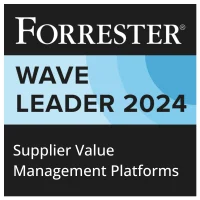Working Capital Management refers to the process of overseeing and optimizing a company’s short-term assets and liabilities to ensure operational efficiency and financial stability. This involves managing inventories, accounts receivable, accounts payable, and cash to maintain the liquidity needed for day-to-day operations while maximizing the firm’s profitability and minimizing financial risks.
Key Benefits
– Improved Cash Flow: Effective working capital management helps maintain a balance between receivables and payables, ensuring that the organization has enough liquidity to meet its short-term obligations while optimizing cash flow for reinvestment or operational use.
– Enhanced Operational Efficiency: By streamlining processes such as inventory management and accounts payable/receivable, organizations can reduce delays and optimize operational efficiency, resulting in reduced costs and improved productivity.
– Risk Mitigation: Proper working capital management reduces dependency on external financing and protects against market fluctuations, reducing financial risks associated with insufficient liquidity.
– Competitive Advantage: Organizations with efficient working capital management are often able to accelerate product delivery and respond more agilely to market changes, gaining an edge over competitors who may struggle with cash flow issues.
– Interest Savings: By optimizing working capital, companies can minimize the cost of capital tied up in excess inventory or receivables. This results in savings on interest costs that would otherwise be incurred through borrowing to cover short-term cash needs.
Related Terms
– Improved Cash Flow: Effective working capital management helps maintain a balance between receivables and payables, ensuring that the organization has enough liquidity to meet its short-term obligations while optimizing cash flow for reinvestment or operational use.
– Enhanced Operational Efficiency: By streamlining processes such as inventory management and accounts payable/receivable, organizations can reduce delays and optimize operational efficiency, resulting in reduced costs and improved productivity.
– Risk Mitigation: Proper working capital management reduces dependency on external financing and protects against market fluctuations, reducing financial risks associated with insufficient liquidity.
– Competitive Advantage: Organizations with efficient working capital management are often able to accelerate product delivery and respond more agilely to market changes, gaining an edge over competitors who may struggle with cash flow issues.
– Interest Savings: By optimizing working capital, companies can minimize the cost of capital tied up in excess inventory or receivables. This results in savings on interest costs that would otherwise be incurred through borrowing to cover short-term cash needs.
References
For further insights into these processes, explore Zycus’ dedicated resources related to Working Capital Management:
- Working Capital Management: How can procurement help?
- Can Procurement Avoid Apple iPhone 6s Chipgate?
- Pulse of Procurement 2014: An Overview of Procurement Technology Trends (Part II) for 2014
- Unlocking Efficiency: A Guide to the Basics of Strategic Sourcing
- Introducing UX Innovation Dew Drops: A Fresh and Comforting Experience
White Papers
Master the UK Procurement Act 2023: Ensure Compliance & Drive Procurement Excellence

Filter by
Compliant Invoicing
Compliant Invoicing refers to the process of generating, submitting, and managing invoices in adherence with legal, regulatory, and contractual requirements.
Continuity Plan
A Continuity Plan is an organized set of policies and procedures designed to ensure that a company’s essential operations can
Cost Modeling
Cost Modeling in procurement refers to the analysis and estimation of the total cost of ownership of a product or
Contract Audit
Contract Audit is a systematic evaluation of agreements and related documentation to ensure compliance with contractual terms, identify discrepancies, and
Procurement Cycle
The Procurement Cycle refers to the end-to-end process through which an organization identifies its needs, sources suppliers, negotiates contracts, places
Procurement Master Data Management
Procurement Master Data Management is the disciplined approach to managing core, consistent procurement information, including supplier, product, and contract data,






















































